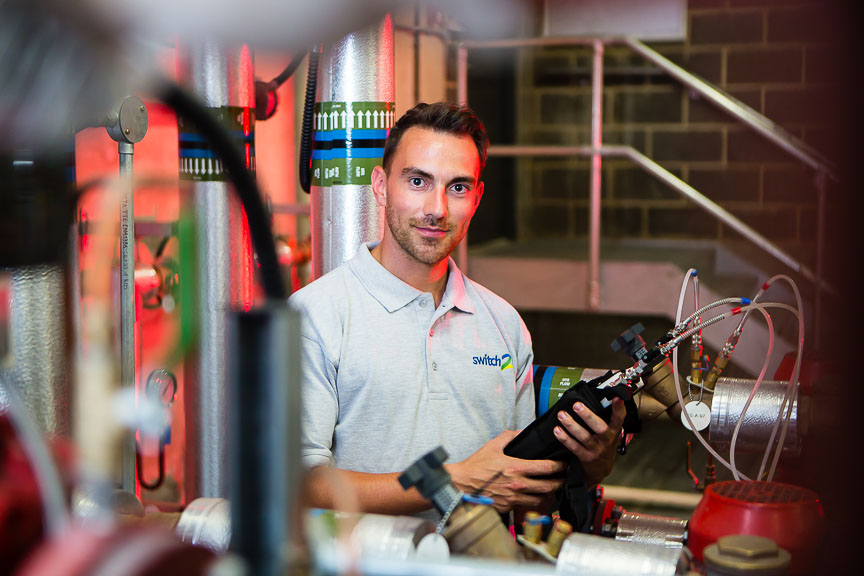On the back of the General Election brings a brand-new year and decade, and with it lots of talk about Net-Zero ambitions. Heat networks are growing in popularity and our blog looks at best practice standards and regulation worth keeping an eye on in 2020.
Net-Zero Strategy
There has been a LOT of talk in the media of late regarding the government’s ambitious task to get the UK carbon-free by 2050. The Conservative Party’s manifesto set out plans to achieve this. However, not everyone is convinced the party can live up to their promises and The Committee on Climate Change (CCC) wrote to the Prime Minister with firm encouragement to stay focused on delivering these objectives; you can read the letter here.
There were 5 key priorities outlined within the letter (Buildings, Transport, Electricity, Industry & Land Use & Agriculture), but no direct mention of heat as a priority. Heat is responsible for 14% of the total UK emissions, perhaps a stronger focus on heat could be given to aid towards delivering the 2050 net-zero target? However, heat networks are gaining momentum, as proposals from the CCC strive to ban all gas boilers in new homes by 2025, making a wider use of heat networks are well underway, but, what does the future (or at least the next 12 months) for heat networks look like?
Next Steps for Heat
At The UK District Energy Association Chairman’s meeting with The Department for Business, Energy and Industrial Strategy (BEIS) on the 12th December, Emma Floyd Deputy Director, Heat Strategy & Heat Networks BEIS confirmed that although there has been little in the public domain on the future of heat networks over the last couple of months due to the General Election, the Government has previously stated that it plans to produce a Heat RoadMap in 2020.
Emma has confirmed that this will focus on how further decarbonisation of heat will take place and what role heat networks will have in this.
BEIS also plan to focus on these key areas as the beginnings to phase out the installation of fossil fuel heating systems in off gas grid buildings:
- exploring and testing the different approaches to heat decarbonisation, for buildings on and off the gas grid, particularly looking at the role of heat networks, heat pumps, hydrogen and biogas
- accelerating the decarbonisation of our gas supplies by increasing the proportion of green gas in the grid, as announced in the 2019 Spring Statement
- improving the way businesses use energy, to support the delivery of the ambition to reduce business energy use by 20% by 2030
- reducing energy demand in industry, through our £18m Industrial Heat Recovery Support Programme and £315m Industrial Energy Transformation Fund
- promoting heat networks in areas of denser heat demand, through the £320m Heat Networks Investment project
- developing a new policy framework for the long-term future of heat; working on a Heat Policy Roadmap setting out key steps required to make these key decisions on heat decarbonisation in the 2020s, with the aim to publish in 2020.
Heat Network Investment Project
The Heat Network Investment Project, a scheme which offers funding to heat networks projects in the form of grants and two loan types (corporate and project), enters Round 4 in 2020. It is open to the private and public sector. The key dates for applications for Round 4 are as follows:
|
Date |
Event / Deadline |
|
Wednesday 4 December 2019 |
Pre-application deadline for funding round 4 |
|
Friday 3 January 2020 |
Full application deadline for funding round 4 |
|
February 2020 |
Investment Committee will convene to award funding |
The guidance states that these loans will be made available to credit worthy sponsor organisations or project companies. Triple Point Heat Networks Investment Management and BEIS will continuously review and evaluate the scheme so we can improve its design and effectiveness.
Future Homes Standard & SAP 10
The consultation for changes to Part L of the Building Regulations began in October 2019, with a deadline for responses looming on 7th February 2020. The proposed changes relating to the conservation of fuel and power for both existing and new dwellings for heat networks with a Future Homes Standard work towards being introduced by 2025. These changes will require new builds to be future proofed with low carbon heating and world leading energy efficiency with new Building Regulations proposing new homes are built to a standard of 75% - 80% fewer CO2 emissions than those built to current regulation.
Updated every four years, SAP calculations are used to demonstrate the energy performance of dwellings in the UK and are a key part of building regulations compliance. The SAP10 is slightly delayed, with the new methodology not for use until the Part L of the building regulations have been revised (as the above point); however, it does give us a valuable insight into the revisions and allow us to plan-ahead.
What does this mean for heat networks?
The future of Heat Networks looks very exciting, as future projects develop and awareness gathers within the sector and a growing incentive to regulate with more best practice standards on the rise, 2020 looks set to be a principal year for the industry.
In our next blog we look at how the development of heat networks regulation is coming along.



